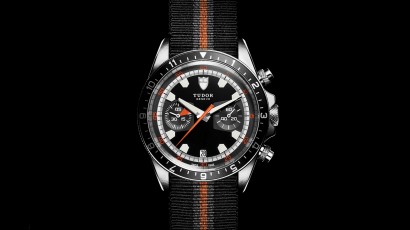
Watch Snob: Tudor Is Back

Tudor
“At first glance, Tudor is the perfect watch for the US market. The most popular ones are beefy sports watches that look best on fat wrists.“
Presumably due to all of last week’s excitement over Tudor’s return to the U.S. market, I was asked to weigh in on this (apparently) momentous occasion. Frankly, the news hardly caught my notice. But duty calls, I suppose, so here are some thoughts.
At first glance, Tudor is the perfect watch for the US market. The most popular ones are beefy sports watches that look best on fat wrists; they look upmarket but have pedestrian movements, making them affordable for the middle manager whose wife would never allow a $5,000 watch in the house. And Tudors are Rolexes without the Rolex stigma for all those who always wanted to own a Rolex but never had the guts to wear one.
According to the immortal words of Rolex founder Hans Wilsdorf, Tudor was expressly created to be a more affordable watch brand. Translated: Tudor is what happens when Rolex goes slumming. It started out in the 1950s with the same cases Rolex was using but then made use of third-party movements to keep costs down. While I doubt Rolex is still making cases for Tudor, it is still an example of a company leaning on design and well-made exteriors but with unremarkable innards. Sound familiar? It should, since there are countless other brands in the same price bracket that do the same.
In fact, Tudor is uncannily similar to another brand that the usual watch peanut gallery loves to hate: TAG Heuer — oversized sports watches that lean heavily on nostalgic designs, and that are affordable and well finished but with pedestrian movements. And I think TAG will be the primary competition for Tudor when it crawls back up on the shores of the Promised Land — though TAG finally has some movement chops to back up its swaggering marketing. To the average watch consumer walking into his favourite jeweler, Tudor will barely get a second glance as he heads straight for the TAG or Omega counters, wanting to look like James Bond or Leonardo DiCaprio. But then the salespeople will be trained to gush over Tudor, with talking points like, “Tudor is owned by Rolex” and other readings from the Book of Wilsdorf.
Ironically, or perhaps fittingly, the people who seem to really be excited about Tudor are those who weren’t around when the brand failed the first time around. They’re the young hipsters buying up vintage Rolexes and wearing them on cheap nylon straps that go so well with their ironic T-shirts and facial hair. They love the fact that the old Tudors look like Rolexes but aren’t Rolexes, so when they wear them, they won’t look like all the other bearded hipsters with nylon-strapped Rolexes in the pub. Think they’ll be happy when the pudgy dude in Dockers in line at Starbucks is wearing a new Tudor?
It’s no accident that Tudor’s most popular new pieces are ones that look like the old pieces — the Heritage Chronograph, the Advisor and the Black Bay Diver. No one seems to want to admit that the Tudors of only a few years ago looked worse than those sold on late-night television for 12 easy payments. Remember the Hydronaut? If not, you’re lucky. Let’s hope the company fired the designer from those days.
Of course, there are two sides to any argument, and I am not entirely pessimistic about Tudor. It has hit on a winning formula with designs and smart pricing. And the fit and finish, at least of the few Tudors I have handled, are above watches from other brands in the same stratus. Another thing I admire about the company is that it is honest about its raison d’être and the movements it uses, which is more than I can say for a lot of other watch brands.
Will Tudor succeed this time around, where it failed 20 years ago? It’s anyone’s guess. If it keeps up the winning designs and stays realistic with its prices, and manages to win over a new generation of watch buyers, it stands a good chance. Or perhaps after an initial bubble of interest propped up by the watch cognoscenti, and a spike in vintage Tudor prices, the wave of interest will ebb and people will move on to another nostalgic and obscure brand. Maybe it’s time to jump on the Eterna bandwagon.
Watch Snob’s Free Newsleetter
Thanks for subscribing!